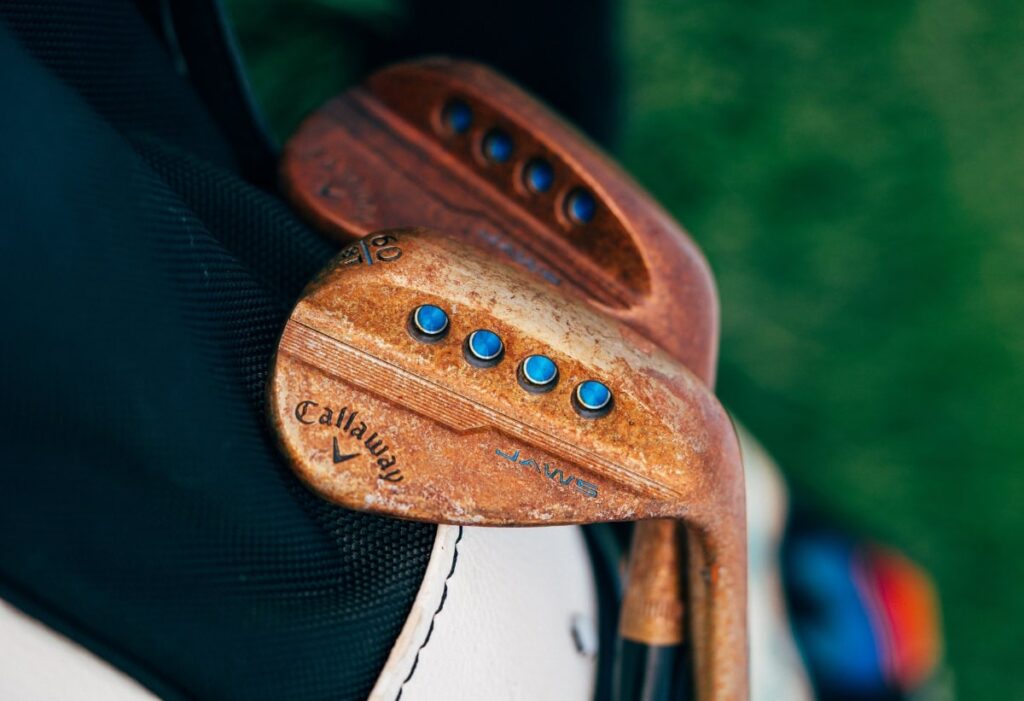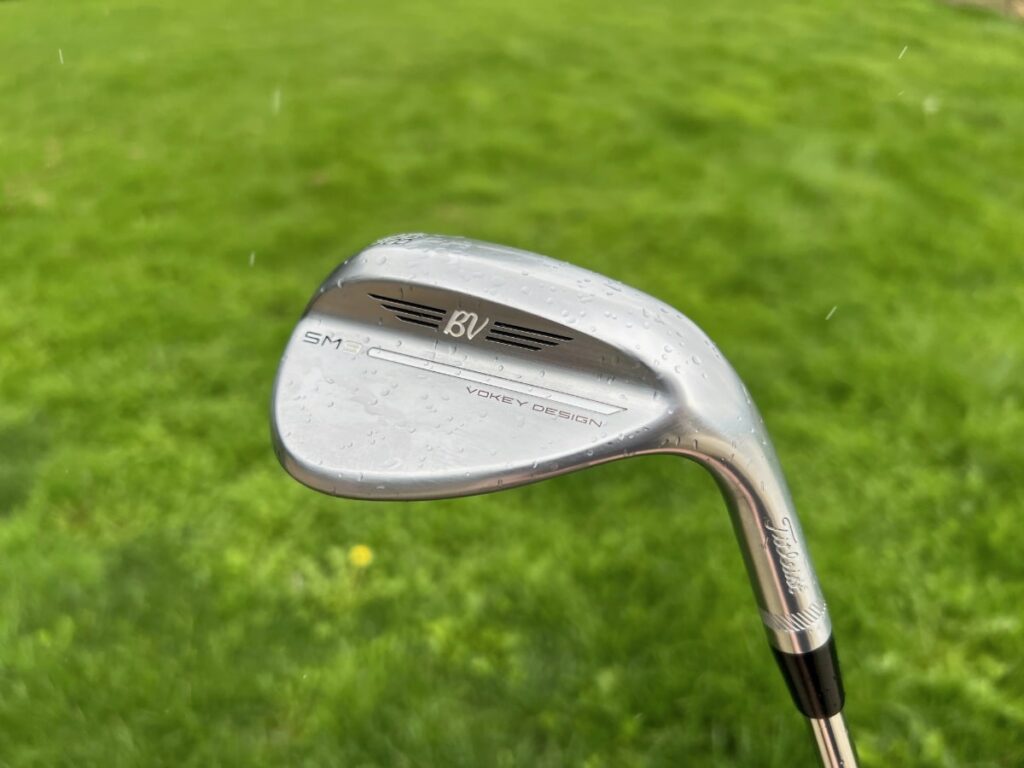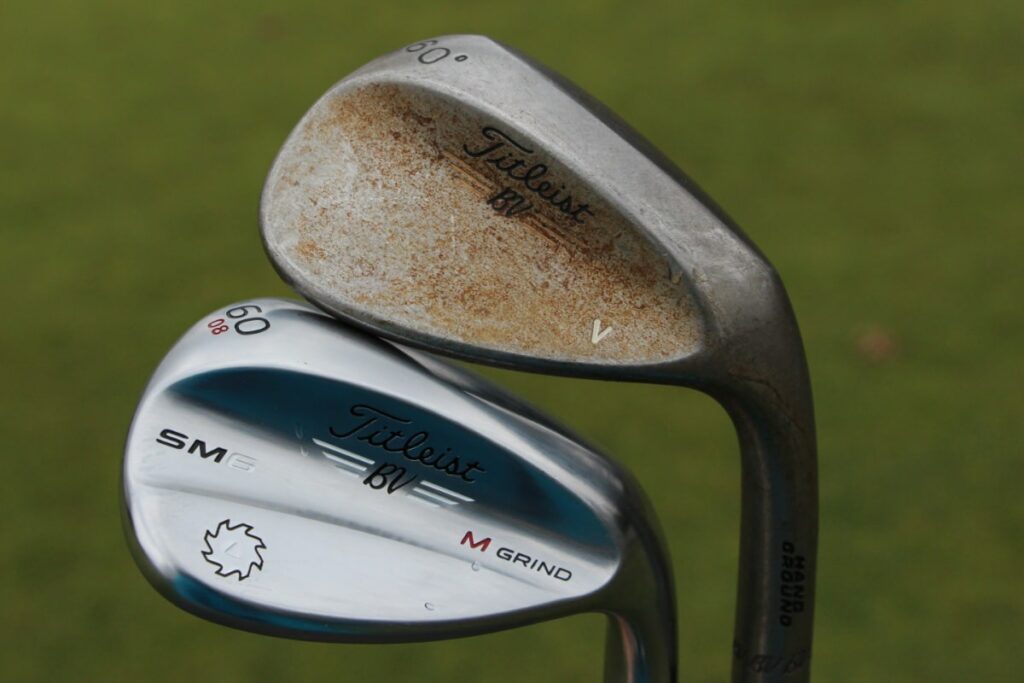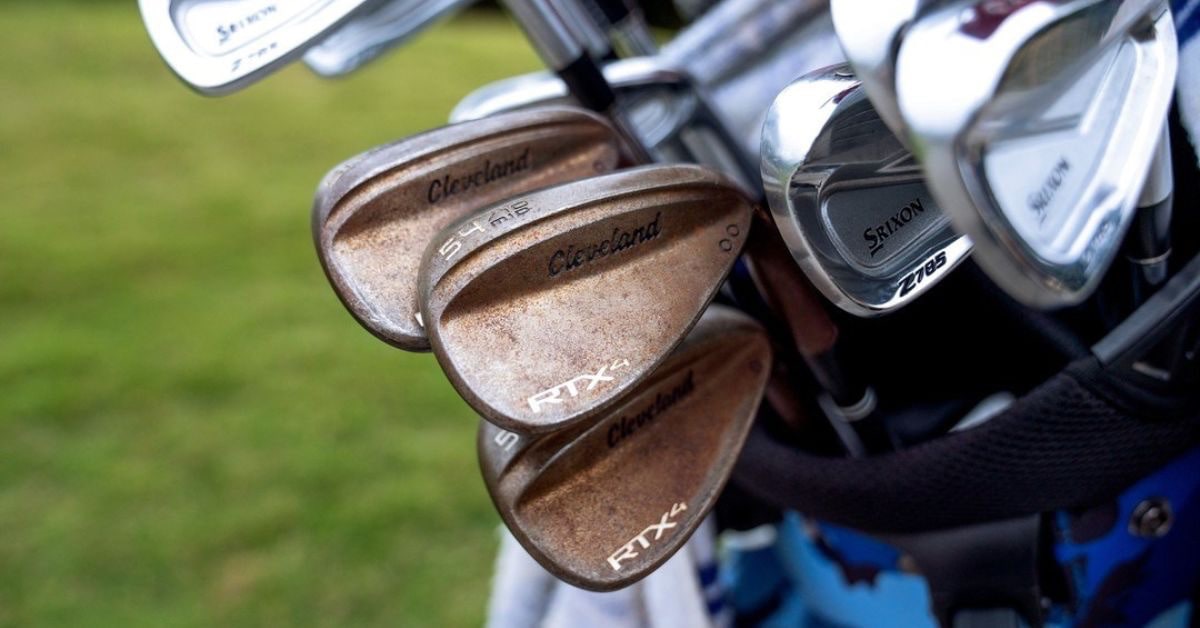I can’t count how many times I’ve been sitting at home, watching golf on TV, and been tempted to buy the clubs I see my favorite players gaming.
That said, golf gear is incredibly subjective. What works for one golfer may not work for another. Some players like raw wedges and some like chrome wedges.
Raw and chrome finishes affect wedge performance, but you have to know what type of performance will suit your individual swing and skill level.
So let’s talk about the differences between raw vs chrome wedges.
Raw vs Chrome Wedges
Raw wedges don’t have a protective finish and will rust quicker than chrome wedges. Some players feel that this rust actually imparts spin control to the club. Chrome wedges won’t rust quickly and tend to last longer than raw wedges.
I’ve heard both sides of the argument and for casual players, it often boils down to aesthetics. While some players simply don’t like to see rust on their clubs, others enjoy the natural patina and feel it adds character to their wedges.
Another thing that you have to keep in mind is that tour pros typically switch their raw wedges once or twice a month. Since most of us mortals can’t afford to do that, chrome wedges may be the more economical and practical choice.
But there’s more to the story here. If you aren’t sure where you land on the chrome vs raw argument, maybe looking at each type in detail will help.
What Are Raw Wedges?

Simply put, raw wedges don’t have any finish like paint or chrome plating.
That said, some raw wedges will have a finish on the head, but the clubface will be left unplated. Without a protective coating, the face will rust quickly which can allow for closer contact between the ball and the clubface.
“Removing the plating enables a more direct connection between the ball and the face at impact.”
Callaway
Let’s discuss some pros and cons of raw wedges.
Advantages of Using Raw Wedges
The main advantage of raw wedges is that they can maximize spin. The lack of a protective plating means there is more friction between the ball and the face.
Secondly, raw wedges perform better in wet conditions. Taylormade tested this and found that raw wedges lose less spin in the rain than chrome wedges.
Raw wedges also maintain their groove shape better than chrome wedges. When a wedge is plated, this thin layer can mis-shape the grooves a bit. Raw wedges maintain their groove geometry during the manufacturing process.
Finally, it’s also easier to adjust the grind and bounce profile of a raw wedge as you’re manipulating the raw material. This makes them easier to customize.
To summarize the advantages of raw wedges:
- Can maximize spin rates
- Performs better in the wet
- Maintains their groove shape
- Easier to adjust the grind and bounce
PROS
+ Excellent spin and feel around the green
+ Particularly versatile in the higher lofts
+ Raw face will develop rust over time
CONS
– Copper look won't appeal to every golfer
However, there are some drawbacks to be aware of with raw wedges.
Disadvantages of Using Raw Wedges
It doesn’t matter to everyone but aesthetic appeal is a disadvantage for raw wedges. They rust quicker than chrome wedges.
There are also performance drawbacks. The grooves of raw wedges are exposed to the elements and will lose their edge quicker than chrome wedges.
In general, raw wedges will not last as long as chrome wedges. Even if you don’t play often, raw wedges can rust just by sitting in your bag.
In summary, here are the disadvantages:
- Rusty appearance doesn’t suit everyone
- Grooves wear and lose their edge quickly
- Raw wedges need replacing more often
Next, let’s cover the pros and cons of chrome wedges.
What Are Chrome Wedges?

What differentiates a chrome wedge from a raw wedge is the chrome plating. This adds protection and durability to the wedge and also applies a polished look.
There are distinct pros and cons of chrome wedges as well.
Advantages of Using Chrome Wedges
The first benefit is that chrome wedges last longer than raw wedges. The plating prevents rust and will better maintain the sharpness of the grooves.
Some players also like the feel of chrome wedges. I have personally heard players say that they think chrome wedges feel significantly softer than raw wedges.
Lastly, chrome wedges tend to be more economical since they don’t have to be replaced as often as raw wedges. This is important for many golfers!
Here’s a breakdown of the advantages of chrome wedges:
- Chrome plating increases the lifespan of a wedge
- Some players prefer the feel of chrome wedges
- Cost savings of buying clubs less frequently
PROS
+ Loads of options to choose from
+ Precise milled grooves for great spin
+ Durable finish will remain shiny
CONS
– Premium price point
Next, let’s consider the disadvantages of chrome wedges.
Disadvantages of Using Chrome Wedges
In the same test that found raw wedges produce more spin, it was found that chrome wedges launch higher in wet conditions. This will likely make it necessary to alter your swing to flight the ball down if you’re playing through dewy turf.
Chrome wedges don’t produce as much friction as untreated steel so some players feel that they provide less spin control in general. Predominantly, this is due to the layer of chrome plating which can soften the sharpness of the grooves.
To summarize the disadvantages of chrome wedges:
- Chrome wedges are known to launch higher
- Lower spin due to chrome plating of the grooves
Still undecided? Let’s look at the head-to-head differences between raw vs chrome wedges. That way, you can make an informed decision for your next set.
Differences Between Raw vs Chrome Wedges

There’s a noticeable difference in the appearance of chrome and raw wedges.
Raw wedges have a dull look while chrome wedges are more reflective, which is something to consider if you usually play in sunny conditions and battle glare.
The maintenance is also different. You should wipe down your raw wedges after each shot and store them in a warm climate. Chrome wedges can be stored virtually anywhere and don’t require such meticulous care.
And while this is a matter of debate, some say that there is a difference in feel between raw and chrome-finished wedges.
Raw wedges also tend to have sharper grooves. The USGA Equipment Rules limit how wide the grooves can be. These rules used to be more lax and it was easy to produce a high-spinning wedge by simply making the grooves wider.
You can’t do that anymore. So you need to get your spin in other ways. Sharpening wedge grooves is one way to improve the spin control of a wedge.
So, you can get sharper grooves with raw wedges — but there’s a downside.
While raw wedges may come off the production line with sharper grooves than chrome wedges, they will wear quickly without a protective plating. You can always sharpen the grooves yourself, but again this is just more maintenance.
Ultimately, it’s a question of personal taste. If you like the natural rust patina, go with a set of raw wedges. If you prefer your wedges to look new and last longer, I’d recommend a set of chrome-plated wedges for that classic look.


